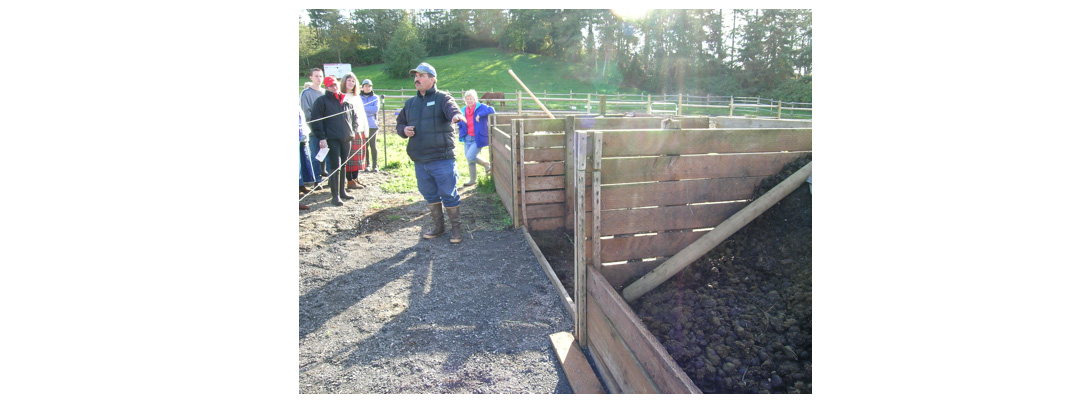Turn Stall Waste into Valuable Compost
by Alayne Blickle
Summer is the perfect time for construction projects and a key management component for horse properties is having something useful to do with horse manure. Composting is my favorite technique and while there are many bin designs and ideas for how to compost, here is one low-tech option. It is best suited for small properties with one to three horses.
First, look for a high, level area on your property. Don’t put your composter in a low-lying area or it will turn into a soggy mess. You must locate your composter far away from creeks, ditches, wetlands or other water bodies. Check with local authorities for specific regulations on this. Choose a location that’s convenient to your stall and paddock areas to make the chore of cleaning up easier and less time consuming.

1. Select a site
You will need at least two bins, maybe a third for convenience. A two-bin system works by piling manure and stall wastes in one bin. When that bin is full allow it to compost and start filling the second bin. Once the first bin is done composting you can start using the finished compost material. For convenience, or if you have several horses, you may want to consider going to three bins. This allows one bin for the daily stall wastes, another bin that is full and in the composting stage, and a third bin for the finished compost to be removed and used at your leisure.
2. Figure out how many bins you need
A list of materials and tools needed is included. It costs about $300 per bin for materials depending on the type of wood you use and the cost in your area. Feel free to improvise and experiment by choosing materials available in your area, which will work for you and your situation.
3. Purchase materials
Use the drawings below as a guide, but feel free to experiment or improvise on plans or materials. Two people can build this compost bin system in a weekend.

For three adjacent 8 foot x 8 foot x 4 foot bins, the following supplies and equipment are needed:
SUPPLIES
8 – 8’ x 6” x 6” treated posts
110 – 8’ landscape timbers (or similar wood)
160 – 3” deck screws
Tarp (or plastic sheet) to cover top of each bin
Heavy items or straps to attach tarp to bins
EQUIPMENT
Drill with screwdriver head & drill bit
25’ tape measure
Drill with screwdriver head & drill bit
Chain saw or hand saw
Carpenter’s level
Post hole digger
Tamping rod or similar tool
This fall join Horses for Clean Water at the following FREE events:
STANWOOD, WA
Saturday, September 13, 9 am – noon
WORKSHOP: Holistic Manure Management
MONROE, WA
Saturday, September 27, 9 am – 1
WORKSHOP & FARM TOUR: Fall in Place for Winter
BELLEVUE, WA
Thursday, September 25, 6:30 – 9 pm
CLASS: Preparing Horse Properties for Winter
REDMOND, WA
Sunday, September 28, 1 – 4 pm
WORKSHOP & FARM TOUR: Mud Management and Footing Selection
Contact Alayne at [email protected] or 206-909-0225 to register or for questions.
Originally Published August 2014 Issue

Alayne Blickle, a life-long equestrian and educator, is the creator/director of Horses for Clean Water, an award-winning, nationally acclaimed environmental education program that “wrote the book” on caring for horses and land. Known for her enthusiastic, fun and down-to-earth approach, she is an educator and photojournalist who has worked with horses and livestock owners for over 20 years. Alayne teaches and travels throughout North America and abroad, and also runs Sweet Pepper Ranch, an eco-sensitive guest ranch and horse motel in Southwestern Idaho where she and her husband raise top-notch reining horses and beautiful grass hay. For more information contact Alayne at [email protected] or 206-909-0225.

